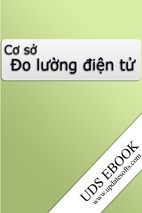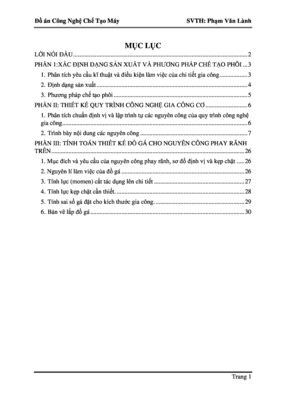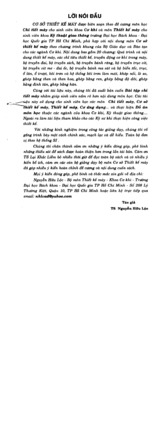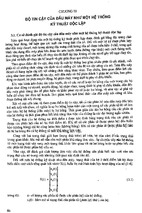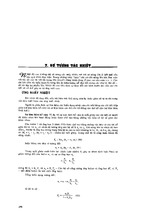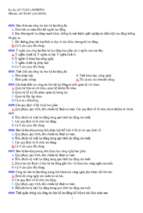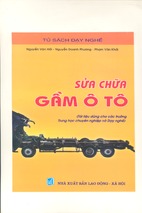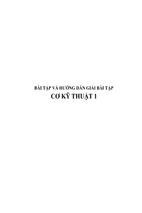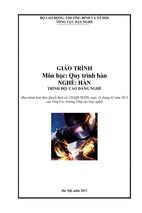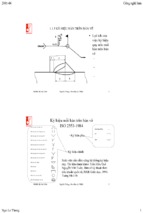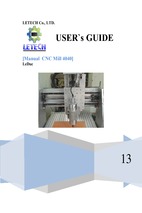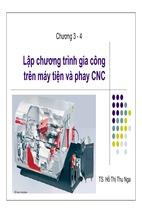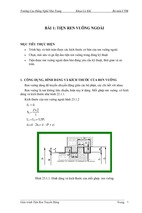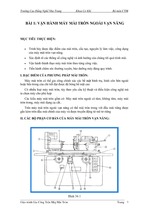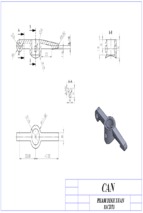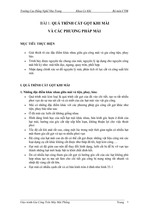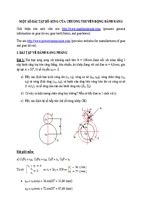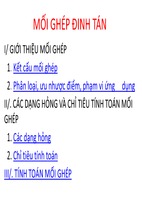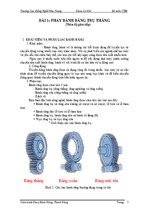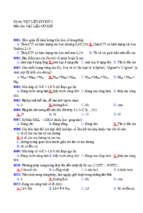2013
ASME Boiler and
Pressure Vessel Code
AN INTERNATIONAL CODE
III
Rules for Construction of
Nuclear Facility Components
Division 1 — Subsection NF
Supports
--`,``,``,,`,````,,,,,`````,`,,`-`-`,,`,,`,`,,`---
5/15/13 5:22 PM
--`,``,``,,`,````,,,,,`````,`,,`-`-`,,`,,`,`,,`---
AN INTERNATIONAL CODE
2013 ASME Boiler &
Pressure Vessel Code
2013 Edition
July 1, 2013
III
RULES FOR CONSTRUCTION
OF NUCLEAR FACILITY
COMPONENTS
Division 1 - Subsection NF
Supports
--`,``,``,,`,````,,,,,`````,`,,`-`-`,,`,,`,`,,`---
ASME Boiler and Pressure Vessel Committee
on Nuclear Power
Two Park Avenue • New York, NY • 10016 USA
Date of Issuance: July 1, 2013
This international code or standard was developed under procedures accredited as meeting the criteria for American National Standards and it is an American National Standard. The Standards Committee that approved the code
or standard was balanced to assure that individuals from competent and concerned interests have had an opportunity to participate. The proposed code or standard was made available for public review and comment that provides an opportunity for additional public input from industry, academia, regulatory agencies, and the publicat-large.
ASME does not “approve,” “rate,” or “endorse” any item, construction, proprietary device, or activity.
ASME does not take any position with respect to the validity of any patent rights asserted in connection with any
items mentioned in this document, and does not undertake to insure anyone utilizing a standard against liability for
infringement of any applicable letters patent, nor assume any such liability. Users of a code or standard are expressly advised that determination of the validity of any such patent rights, and the risk of infringement of such
rights, is entirely their own responsibility.
Participation by federal agency representative(s) or person(s) affiliated with industry is not to be interpreted as
government or industry endorsement of this code or standard.
ASME accepts responsibility for only those interpretations of this document issued in accordance with the established ASME procedures and policies, which precludes the issuance of interpretations by individuals.
The endnotes in this document are part of this American National Standard.
ASME collective membership mark
Certification Mark
The above ASME symbol is registered in the U.S. Patent Office.
“ASME” is the trademark of The American Society of Mechanical Engineers.
No part of this document may be reproduced in any form, in an electronic retrieval
system or otherwise, without the prior written permission of the publisher.
Library of Congress Catalog Card Number: 56-3934
Printed in the United States of America
Adopted by the Council of The American Society of Mechanical Engineers, 1914; latest edition 2013.
The American Society of Mechanical Engineers
Two Park Avenue, New York, NY 10016-5990
Copyright © 2013 by
THE AMERICAN SOCIETY OF MECHANICAL ENGINEERS
All rights reserved
List of Sections . . . . . . . . . . . . . . . . . . . . . . . . . . . . . . . . . . . . . . . . . . . . . . . . . . . . . . . . . . . . . . . . . . . . . . . . . . . . . . . .
Foreword . . . . . . . . . . . . . . . . . . . . . . . . . . . . . . . . . . . . . . . . . . . . . . . . . . . . . . . . . . . . . . . . . . . . . . . . . . . . . . . . . . . . .
Statement of Policy on the Use of the Certification Mark and Code Authorization in Advertising . . . . . . . . . . . .
Statement of Policy on the Use of ASME Marking to Identify Manufactured Items . . . . . . . . . . . . . . . . . . . . . . . .
Submittal of Technical Inquiries to the Boiler and Pressure Vessel Standards Committees . . . . . . . . . . . . . . . . .
Personnel . . . . . . . . . . . . . . . . . . . . . . . . . . . . . . . . . . . . . . . . . . . . . . . . . . . . . . . . . . . . . . . . . . . . . . . . . . . . . . . . . . . . .
Organization of Section III . . . . . . . . . . . . . . . . . . . . . . . . . . . . . . . . . . . . . . . . . . . . . . . . . . . . . . . . . . . . . . . . . . . . . . .
Summary of Changes . . . . . . . . . . . . . . . . . . . . . . . . . . . . . . . . . . . . . . . . . . . . . . . . . . . . . . . . . . . . . . . . . . . . . . . . . . .
List of Changes in Record Number Order . . . . . . . . . . . . . . . . . . . . . . . . . . . . . . . . . . . . . . . . . . . . . . . . . . . . . . . . . .
Cross-Referencing and Stylistic Changes in the Boiler and Pressure Vessel Code . . . . . . . . . . . . . . . . . . . . . . . . .
viii
x
xii
xii
xiii
xv
xxx
xxxiii
xxxv
xxxvi
Article NF-1000
NF-1100
NF-1110
NF-1120
NF-1130
NF-1200
NF-1210
NF-1230
NF-1240
Introduction . . . . . . . . . . . . . . . . . . . . . . . . . . . . . . . . . . . . . . . . . . . . . . . . . .
Scope and General Requirements . . . . . . . . . . . . . . . . . . . . . . . . . . . . . . . . .
Aspects of Construction Covered by These Rules . . . . . . . . . . . . . . . . . . . .
Rules for Supports and Their Classification . . . . . . . . . . . . . . . . . . . . . . . . .
Boundaries of Jurisdiction . . . . . . . . . . . . . . . . . . . . . . . . . . . . . . . . . . . . . . .
Types of Supports and Attachments . . . . . . . . . . . . . . . . . . . . . . . . . . . . . . .
Types of Supports . . . . . . . . . . . . . . . . . . . . . . . . . . . . . . . . . . . . . . . . . . . . . .
Welding Between Types of Supports . . . . . . . . . . . . . . . . . . . . . . . . . . . . . .
Attachments . . . . . . . . . . . . . . . . . . . . . . . . . . . . . . . . . . . . . . . . . . . . . . . . . . .
1
1
1
1
2
2
2
8
8
Article NF-2000
NF-2100
NF-2110
NF-2120
NF-2130
NF-2140
NF-2150
NF-2160
NF-2170
NF-2180
NF-2200
NF-2210
NF-2220
Material . . . . . . . . . . . . . . . . . . . . . . . . . . . . . . . . . . . . . . . . . . . . . . . . . . . . . .
General Requirements for Material . . . . . . . . . . . . . . . . . . . . . . . . . . . . . . . .
Scope of Principal Terms Employed . . . . . . . . . . . . . . . . . . . . . . . . . . . . . . .
Support Material . . . . . . . . . . . . . . . . . . . . . . . . . . . . . . . . . . . . . . . . . . . . . . .
Certification of Material . . . . . . . . . . . . . . . . . . . . . . . . . . . . . . . . . . . . . . . . .
Welding Material . . . . . . . . . . . . . . . . . . . . . . . . . . . . . . . . . . . . . . . . . . . . . . .
Material Identification . . . . . . . . . . . . . . . . . . . . . . . . . . . . . . . . . . . . . . . . . .
Deterioration of Material in Service . . . . . . . . . . . . . . . . . . . . . . . . . . . . . . .
Heat Treatment to Enhance Impact Properties . . . . . . . . . . . . . . . . . . . . . .
Procedures for Heat Treatment of Material . . . . . . . . . . . . . . . . . . . . . . . . .
Material Test Coupons and Specimens for Ferritic Steel Material . . . . . .
Heat Treatment Requirements . . . . . . . . . . . . . . . . . . . . . . . . . . . . . . . . . . .
Procedure for Obtaining Test Coupons and Specimens for Quenched and
Tempered Material . . . . . . . . . . . . . . . . . . . . . . . . . . . . . . . . . . . . . . . . . . .
Fracture Toughness Requirements for Material . . . . . . . . . . . . . . . . . . . . .
Material to Be Impact Tested . . . . . . . . . . . . . . . . . . . . . . . . . . . . . . . . . . . .
Impact Test Procedures . . . . . . . . . . . . . . . . . . . . . . . . . . . . . . . . . . . . . . . . .
Test Requirements and Acceptance Standards . . . . . . . . . . . . . . . . . . . . . .
Number of Impact Tests Required . . . . . . . . . . . . . . . . . . . . . . . . . . . . . . . .
Retests . . . . . . . . . . . . . . . . . . . . . . . . . . . . . . . . . . . . . . . . . . . . . . . . . . . . . . .
Calibration of Instruments and Equipment . . . . . . . . . . . . . . . . . . . . . . . . .
Welding Material . . . . . . . . . . . . . . . . . . . . . . . . . . . . . . . . . . . . . . . . . . . . . . .
General Requirements . . . . . . . . . . . . . . . . . . . . . . . . . . . . . . . . . . . . . . . . . .
Required Tests . . . . . . . . . . . . . . . . . . . . . . . . . . . . . . . . . . . . . . . . . . . . . . . . .
Weld Metal Tests . . . . . . . . . . . . . . . . . . . . . . . . . . . . . . . . . . . . . . . . . . . . . . .
Storage and Handling of Welding Material . . . . . . . . . . . . . . . . . . . . . . . . .
Examination and Repair of Material . . . . . . . . . . . . . . . . . . . . . . . . . . . . . . .
Examination and Repair of Material Other Than Bolting . . . . . . . . . . . . . .
Required Examination and Acceptance Standards for Class 1 Springs . .
9
9
9
9
10
11
11
11
11
11
11
11
NF-2300
NF-2310
NF-2320
NF-2330
NF-2340
NF-2350
NF-2360
NF-2400
NF-2410
NF-2420
NF-2430
NF-2440
NF-2500
NF-2510
NF-2520
12
13
13
14
16
17
18
21
21
21
21
22
25
25
25
25
--`,``,``,,`,````,,,,,`````,`,,`-`-`,,`,,`,`,,`---
TABLE OF CONTENTS
NF-2530
26
26
26
26
Article NF-3000
NF-3100
NF-3110
NF-3120
NF-3130
NF-3140
NF-3200
NF-3210
NF-3220
NF-3250
NF-3260
NF-3270
NF-3280
NF-3300
NF-3310
NF-3320
NF-3330
NF-3340
NF-3350
NF-3360
NF-3370
NF-3380
NF-3400
NF-3410
NF-3420
NF-3450
NF-3460
NF-3470
NF-3480
NF-3500
NF-3510
NF-3520
NF-3550
NF-3570
NF-3580
NF-3600
NF-3610
NF-3620
NF-3650
NF-3670
NF-3680
Design . . . . . . . . . . . . . . . . . . . . . . . . . . . . . . . . . . . . . . . . . . . . . . . . . . . . . . .
General Design Requirements . . . . . . . . . . . . . . . . . . . . . . . . . . . . . . . . . . . .
Loading Criteria . . . . . . . . . . . . . . . . . . . . . . . . . . . . . . . . . . . . . . . . . . . . . . . .
Design Considerations . . . . . . . . . . . . . . . . . . . . . . . . . . . . . . . . . . . . . . . . . .
General Design Requirements . . . . . . . . . . . . . . . . . . . . . . . . . . . . . . . . . . . .
General Design Procedures . . . . . . . . . . . . . . . . . . . . . . . . . . . . . . . . . . . . . .
Design Rules for Plate‐ and Shell‐Type Supports . . . . . . . . . . . . . . . . . . . .
General Requirements . . . . . . . . . . . . . . . . . . . . . . . . . . . . . . . . . . . . . . . . . .
Design by Analysis for Class 1 . . . . . . . . . . . . . . . . . . . . . . . . . . . . . . . . . . . .
Design by Analysis for Class 2 and MC . . . . . . . . . . . . . . . . . . . . . . . . . . . .
Design by Analysis for Class 3 . . . . . . . . . . . . . . . . . . . . . . . . . . . . . . . . . . . .
Experimental Stress Analysis . . . . . . . . . . . . . . . . . . . . . . . . . . . . . . . . . . . . .
Design by Load Rating . . . . . . . . . . . . . . . . . . . . . . . . . . . . . . . . . . . . . . . . . .
Design Rules for Linear‐Type Supports . . . . . . . . . . . . . . . . . . . . . . . . . . . .
General Requirements . . . . . . . . . . . . . . . . . . . . . . . . . . . . . . . . . . . . . . . . . .
Design by Linear Elastic Analysis for Class 1 . . . . . . . . . . . . . . . . . . . . . . .
High Cycle Fatigue Design for Class 1 . . . . . . . . . . . . . . . . . . . . . . . . . . . . .
Limit Analysis Design for Class 1 . . . . . . . . . . . . . . . . . . . . . . . . . . . . . . . . .
Design by Analysis for Class 2 and MC . . . . . . . . . . . . . . . . . . . . . . . . . . . .
Design by Analysis for Class 3 . . . . . . . . . . . . . . . . . . . . . . . . . . . . . . . . . . . .
Experimental Stress Analysis . . . . . . . . . . . . . . . . . . . . . . . . . . . . . . . . . . . . .
Design by Load Rating . . . . . . . . . . . . . . . . . . . . . . . . . . . . . . . . . . . . . . . . . .
Design Rules for Standard Supports . . . . . . . . . . . . . . . . . . . . . . . . . . . . . . .
General Requirements . . . . . . . . . . . . . . . . . . . . . . . . . . . . . . . . . . . . . . . . . .
Design by Analysis for Class 1 . . . . . . . . . . . . . . . . . . . . . . . . . . . . . . . . . . . .
Design by Analysis for Class 2 . . . . . . . . . . . . . . . . . . . . . . . . . . . . . . . . . . . .
Design by Analysis for Class 3 . . . . . . . . . . . . . . . . . . . . . . . . . . . . . . . . . . . .
Design by Experimental Stress Analysis . . . . . . . . . . . . . . . . . . . . . . . . . . .
Procedure for Load Rating . . . . . . . . . . . . . . . . . . . . . . . . . . . . . . . . . . . . . . .
Design Rules for Component Supports . . . . . . . . . . . . . . . . . . . . . . . . . . . . .
General Requirements . . . . . . . . . . . . . . . . . . . . . . . . . . . . . . . . . . . . . . . . . .
Design by Analysis for Class 1 . . . . . . . . . . . . . . . . . . . . . . . . . . . . . . . . . . . .
Design by Analysis for Class 2, 3, and MC . . . . . . . . . . . . . . . . . . . . . . . . . .
Experimental Stress Analysis . . . . . . . . . . . . . . . . . . . . . . . . . . . . . . . . . . . . .
Design by Load Rating . . . . . . . . . . . . . . . . . . . . . . . . . . . . . . . . . . . . . . . . . .
Design Rules for Piping Supports . . . . . . . . . . . . . . . . . . . . . . . . . . . . . . . . .
General Requirements . . . . . . . . . . . . . . . . . . . . . . . . . . . . . . . . . . . . . . . . . .
Design by Analysis for Class 1 . . . . . . . . . . . . . . . . . . . . . . . . . . . . . . . . . . . .
Design by Analysis for Class 2 and 3 . . . . . . . . . . . . . . . . . . . . . . . . . . . . . .
Experimental Stress Analysis . . . . . . . . . . . . . . . . . . . . . . . . . . . . . . . . . . . . .
Design by Load Rating . . . . . . . . . . . . . . . . . . . . . . . . . . . . . . . . . . . . . . . . . .
27
27
27
27
29
30
31
31
31
37
40
40
40
42
42
45
67
67
76
76
76
76
77
77
78
80
80
80
80
80
80
80
80
81
81
81
81
82
82
83
83
Article NF-4000
NF-4100
NF-4110
NF-4120
NF-4130
NF-4200
NF-4210
NF-4220
NF-4230
Fabrication and Installation . . . . . . . . . . . . . . . . . . . . . . . . . . . . . . . . . . . .
General Requirements . . . . . . . . . . . . . . . . . . . . . . . . . . . . . . . . . . . . . . . . . .
Introduction . . . . . . . . . . . . . . . . . . . . . . . . . . . . . . . . . . . . . . . . . . . . . . . . . . .
Certification of Materials and Fabrication by Support Certificate Holder
Repair of Material . . . . . . . . . . . . . . . . . . . . . . . . . . . . . . . . . . . . . . . . . . . . . .
Forming, Fitting, and Aligning . . . . . . . . . . . . . . . . . . . . . . . . . . . . . . . . . . . .
Cutting, Forming, and Bending . . . . . . . . . . . . . . . . . . . . . . . . . . . . . . . . . . .
Support Tolerances . . . . . . . . . . . . . . . . . . . . . . . . . . . . . . . . . . . . . . . . . . . . .
Fitting and Aligning . . . . . . . . . . . . . . . . . . . . . . . . . . . . . . . . . . . . . . . . . . . .
84
84
84
84
84
85
85
86
86
--`,``,``,,`,````,,,,,`````,`,,`-`-`,,`,,`,`,,`---
NF-2580
NF-2600
NF-2610
Required Examination and Acceptance Standards for Coiled Wire Rope
Used As a Spring . . . . . . . . . . . . . . . . . . . . . . . . . . . . . . . . . . . . . . . . . . . . .
Examination of Bolting Material and Rods . . . . . . . . . . . . . . . . . . . . . . . . .
Material Manufacturer’s Quality System Programs . . . . . . . . . . . . . . . . . . .
Documentation and Maintenance of Quality System Programs . . . . . . . . .
NF-4240
NF-4300
NF-4310
NF-4320
NF-4330
NF-4400
NF-4410
NF-4420
NF-4430
NF-4440
NF-4450
NF-4500
NF-4510
NF-4600
NF-4610
NF-4620
NF-4660
NF-4700
NF-4710
NF-4720
Requirements for Welded Joints . . . . . . . . . . . . . . . . . . . . . . . . . . . . . . . . . .
Welding Qualifications . . . . . . . . . . . . . . . . . . . . . . . . . . . . . . . . . . . . . . . . . .
General Requirements . . . . . . . . . . . . . . . . . . . . . . . . . . . . . . . . . . . . . . . . . .
Welding Qualifications and Records . . . . . . . . . . . . . . . . . . . . . . . . . . . . . . .
General Requirements for Welding Procedure Qualification Tests . . . . . .
Rules Governing Making and Repairing Welds . . . . . . . . . . . . . . . . . . . . . .
Precautions to Be Taken Before Welding . . . . . . . . . . . . . . . . . . . . . . . . . . .
Rules for Making Welded Joints . . . . . . . . . . . . . . . . . . . . . . . . . . . . . . . . . .
Welding of Attachments . . . . . . . . . . . . . . . . . . . . . . . . . . . . . . . . . . . . . . . . .
Special Requirements for Welding . . . . . . . . . . . . . . . . . . . . . . . . . . . . . . . .
Repair of Weld Metal Defects . . . . . . . . . . . . . . . . . . . . . . . . . . . . . . . . . . . .
Brazing . . . . . . . . . . . . . . . . . . . . . . . . . . . . . . . . . . . . . . . . . . . . . . . . . . . . . . .
Rules for Brazing . . . . . . . . . . . . . . . . . . . . . . . . . . . . . . . . . . . . . . . . . . . . . . .
Heat Treatment . . . . . . . . . . . . . . . . . . . . . . . . . . . . . . . . . . . . . . . . . . . . . . . .
Welding Preheat and Interpass Requirements . . . . . . . . . . . . . . . . . . . . . .
Postweld Heat Treatment . . . . . . . . . . . . . . . . . . . . . . . . . . . . . . . . . . . . . . .
Heat Treatment of Electroslag Welds . . . . . . . . . . . . . . . . . . . . . . . . . . . . . .
Requirements for Bolted Construction . . . . . . . . . . . . . . . . . . . . . . . . . . . . .
Bolting and Threading . . . . . . . . . . . . . . . . . . . . . . . . . . . . . . . . . . . . . . . . . .
Bolting . . . . . . . . . . . . . . . . . . . . . . . . . . . . . . . . . . . . . . . . . . . . . . . . . . . . . . .
87
87
87
87
88
90
90
90
91
91
91
93
93
94
94
94
99
99
99
99
Article NF-5000
NF-5100
NF-5110
NF-5200
NF-5210
NF-5220
NF-5230
NF-5240
NF-5300
NF-5320
NF-5330
NF-5340
NF-5350
NF-5360
NF-5500
NF-5510
NF-5520
NF-5530
Examination . . . . . . . . . . . . . . . . . . . . . . . . . . . . . . . . . . . . . . . . . . . . . . . . . .
General Requirements for Examination . . . . . . . . . . . . . . . . . . . . . . . . . . . .
Procedures, Qualifications, and Evaluations . . . . . . . . . . . . . . . . . . . . . . . .
Required Examination of Welds . . . . . . . . . . . . . . . . . . . . . . . . . . . . . . . . . .
Examination of Class 1 Support Welds . . . . . . . . . . . . . . . . . . . . . . . . . . . .
Examination of Class 2 and MC Support Welds . . . . . . . . . . . . . . . . . . . . .
Examination of Class 3 Support Welds . . . . . . . . . . . . . . . . . . . . . . . . . . . .
Inertia and Continuous Drive Friction Welds . . . . . . . . . . . . . . . . . . . . . . .
Acceptance Standards . . . . . . . . . . . . . . . . . . . . . . . . . . . . . . . . . . . . . . . . . . .
Radiographic Acceptance Standards . . . . . . . . . . . . . . . . . . . . . . . . . . . . . . .
Ultrasonic Acceptance Standards . . . . . . . . . . . . . . . . . . . . . . . . . . . . . . . . .
Magnetic Particle Acceptance Standards . . . . . . . . . . . . . . . . . . . . . . . . . . .
Liquid Penetrant Acceptance Standards . . . . . . . . . . . . . . . . . . . . . . . . . . . .
Visual Acceptance Standards . . . . . . . . . . . . . . . . . . . . . . . . . . . . . . . . . . . . .
Qualifications and Certification of Nondestructive Examination Personnel
General Requirements . . . . . . . . . . . . . . . . . . . . . . . . . . . . . . . . . . . . . . . . . .
Personnel Qualification, Certification, and Verification . . . . . . . . . . . . . . .
Records . . . . . . . . . . . . . . . . . . . . . . . . . . . . . . . . . . . . . . . . . . . . . . . . . . . . . . .
102
102
102
102
102
103
103
103
103
103
104
104
104
105
105
105
105
106
Article NF-8000
NF-8100
Certificates of Authorization and Certification Documents . . . . . . . .
General Requirements . . . . . . . . . . . . . . . . . . . . . . . . . . . . . . . . . . . . . . . . . .
107
107
.............................................................
108
Mandatory Appendix NF-II
Design of Single Angle Members . . . . . . . . . . . . . . . . . . . . . . . . . . . . . . . .
109
Mandatory Appendix NF-III
Energy Absorbing Support Material . . . . . . . . . . . . . . . . . . . . . . . . . . . . .
116
Nonmandatory Appendix NF-A
Structural Bolt Preloading . . . . . . . . . . . . . . . . . . . . . . . . . . . . . . . . . . . . .
120
Nonmandatory Appendix NF-B
Design Allowable Stresses for Plate and Shell and Linear Type Supports . . . . . . . . . . . . . . . . . . . . . . . . . . . . . . . . . . . . . . . . . . . . . . . . . . . . . . .
124
Nonmandatory Appendix NF-C
Design Basis for Linear‐Type Supports . . . . . . . . . . . . . . . . . . . . . . . . . .
131
Nonmandatory Appendix NF-D
Tolerances . . . . . . . . . . . . . . . . . . . . . . . . . . . . . . . . . . . . . . . . . . . . . . . . . . .
137
Nonmandatory Appendix NF-E
Dampers, Energy Absorbers, and Snubbers . . . . . . . . . . . . . . . . . . . . . .
143
Mandatory Appendix NF-I
NF-1132-2
NF-1214-1
NF-2311(b)-1
NF-2331(a)-1
NF-2331(a)-2
NF-2433.1-1
NF-3226.1-1
NF-3226.1(a)-1
NF-3226.1(a)-2
NF-3256.1-1
NF-3324.1(a)(1)
NF-3332.3-1
NF-3426.1-1
NF-3626(a)-1
NF-4427-1
NF-4441-1
NF-II-3510
NF-A-1311
NF-B-2400-1
NF-B-2400-2
TABLES
NF-2121(a)-1
NF-2311(b)-1
NF-2331(a)-1
NF-2331(a)-2
NF-2331(a)-3
NF-2331(a)-4
NF-2333-1
NF-2432.1-1
NF-2432.2(a)-1
NF-3131(a)-1
NF-3221.2-1
NF-3225.2-1
NF-3251.2-1
NF-3312.1(b)-1
NF-3322.2(e)(2)-1
NF-3324.5(a)-1
NF-3324.6(a)(4)-1
NF-3324.6(b)(1)-1
NF-3332.2-1
NF-3332.3-1
NF-3332.4-1
NF-3611-1
NF-4232-1
Typical Examples of Jurisdictional Boundaries Between Piping Supports and the Building
Structure . . . . . . . . . . . . . . . . . . . . . . . . . . . . . . . . . . . . . . . . . . . . . . . . . . . . . . . . . . . . . . . . .
Typical Example of Jurisdictional Boundary Between Component Support and the Building
Structure . . . . . . . . . . . . . . . . . . . . . . . . . . . . . . . . . . . . . . . . . . . . . . . . . . . . . . . . . . . . . . . . .
Typical Standard Support Units . . . . . . . . . . . . . . . . . . . . . . . . . . . . . . . . . . . . . . . . . . . . . . . .
Impact Test Exemption Curves for Materials for Class 2, 3, and MC Supports . . . . . . . . . .
Required Cv Energy Values for Class 2 and MC Support Material Other Than Bolting . . .
Required Cv Energy Values for Class 3 support Material Other Than Bolting . . . . . . . . . .
Delta Ferrite Content . . . . . . . . . . . . . . . . . . . . . . . . . . . . . . . . . . . . . . . . . . . . . . . . . . . . . . . . .
Permissible Welded Joints for Class 1 Plate‐ and Shell‐Type Supports . . . . . . . . . . . . . . . .
Typical Weld Details Referenced . . . . . . . . . . . . . . . . . . . . . . . . . . . . . . . . . . . . . . . . . . . . . . . .
Butt Welding of Plates of Unequal Thickness . . . . . . . . . . . . . . . . . . . . . . . . . . . . . . . . . . . . .
Permissible Welded Joints for Class 2, 3, and MC Plate‐ and Shell‐Type Supports . . . . . .
Typical Friction‐Type Connections Using High Strength Bolts . . . . . . . . . . . . . . . . . . . . . . .
Illustrative Examples . . . . . . . . . . . . . . . . . . . . . . . . . . . . . . . . . . . . . . . . . . . . . . . . . . . . . . . . .
Additional Permissible Welded Joints for Class 1 Standard Supports . . . . . . . . . . . . . . . . .
Additional Permissible Welded Joints for Class 1 Piping Supports . . . . . . . . . . . . . . . . . . .
Fillet Weld Dimensions . . . . . . . . . . . . . . . . . . . . . . . . . . . . . . . . . . . . . . . . . . . . . . . . . . . . . . .
Weld Joint Producing Through‐Thickness Loading . . . . . . . . . . . . . . . . . . . . . . . . . . . . . . . . .
Equal Leg Single Angle Limits for F b = 0.66S y . . . . . . . . . . . . . . . . . . . . . . . . . . . . . . . . . . . .
...........................................................................
Effective Length Factor for Various End Conditions . . . . . . . . . . . . . . . . . . . . . . . . . . . . . . . .
Alignment Chart for Effective Length of Columns in Continuous Frames . . . . . . . . . . . . . .
Material Tables Required for Supports . . . . . . . . . . . . . . . . . . . . . . . . . . . . . . . . . . . . . . . .
Exemptions From Impact Testing Under NF-2311(b)(9) and NF-2311(b)(10) for Material Thickness to 21/2 in. (64 mm), Inclusive . . . . . . . . . . . . . . . . . . . . . . . . . . . . . . . . . .
Required Cv Lateral Expansion Values for Class 1 Support Material Other Than Bolting
Required Cv Lateral Expansion Values for Class 2 And MC Support Material Other Than
Bolting . . . . . . . . . . . . . . . . . . . . . . . . . . . . . . . . . . . . . . . . . . . . . . . . . . . . . . . . . . . . . . . . .
Required Cv Lateral Expansion Values for Class 3 Support Material Other Than Bolting
Required Cv Energy Values for Class 1 Support Material Other Than Bolting . . . . . . . .
Required Cv Values for Bolting Material . . . . . . . . . . . . . . . . . . . . . . . . . . . . . . . . . . . . . . .
Sampling of Welding Materials for Chemical Analysis . . . . . . . . . . . . . . . . . . . . . . . . . . . .
Welding Material Chemical Analysis . . . . . . . . . . . . . . . . . . . . . . . . . . . . . . . . . . . . . . . . . . .
Reference Paragraphs for Procedures for Design of Component Supports, Piping Supports, and Standard Supports . . . . . . . . . . . . . . . . . . . . . . . . . . . . . . . . . . . . . . . . . . . . . .
Elastic Analysis Stress Categories and Stress Limit Factors for Class 1 Plate‐ And Shell‐
Type Supports Designed by Analysis . . . . . . . . . . . . . . . . . . . . . . . . . . . . . . . . . . . . . . . .
Stress Limit Factors for Class 1, 2, 3, and MC Bolt Design by Analysis . . . . . . . . . . . . . .
Elastic Analysis Stress Categories and Stress Limit Factors for Class 2, 3, and MC Plate‐
And Shell‐Type Supports Designed by Analysis . . . . . . . . . . . . . . . . . . . . . . . . . . . . . . .
Elastic Analysis Stress Categories and Stress Limit Factors for Class 1, 2, 3, and MC
Linear-Type Supports Designed by Analysis . . . . . . . . . . . . . . . . . . . . . . . . . . . . . . . . . .
Limiting Proportions for Channels and Tees . . . . . . . . . . . . . . . . . . . . . . . . . . . . . . . . . . . .
Allowable Stress Limits for Class 1 Linear‐Type Support Welds . . . . . . . . . . . . . . . . . . .
Effective Slip Coefficient Versus Surface Condition . . . . . . . . . . . . . . . . . . . . . . . . . . . . . .
Minimum Edge Distances . . . . . . . . . . . . . . . . . . . . . . . . . . . . . . . . . . . . . . . . . . . . . . . . . . . .
Classification of Loading Conditions . . . . . . . . . . . . . . . . . . . . . . . . . . . . . . . . . . . . . . . . . . .
Stress Categories . . . . . . . . . . . . . . . . . . . . . . . . . . . . . . . . . . . . . . . . . . . . . . . . . . . . . . . . . . .
Allowable Stress Ranges . . . . . . . . . . . . . . . . . . . . . . . . . . . . . . . . . . . . . . . . . . . . . . . . . . . . .
Suggested Piping Support Spacing . . . . . . . . . . . . . . . . . . . . . . . . . . . . . . . . . . . . . . . . . . . .
Maximum Allowable Offset in Final Butt Welded Joints . . . . . . . . . . . . . . . . . . . . . . . . . .
3
6
7
15
19
20
25
35
36
37
39
61
71
79
82
92
93
113
121
126
127
10
14
17
17
17
18
21
24
24
30
32
34
38
43
52
63
66
66
67
68
73
81
86
--`,``,``,,`,````,,,,,`````,`,,`-`-`,,`,,`,`,,`---
FIGURES
NF-1132-1
Mandatory Requirements for Postweld Heat Treatment (PWHT) of Welds . . . . . . . . . .
Alternative Holding Temperatures and Times . . . . . . . . . . . . . . . . . . . . . . . . . . . . . . . . . .
Exemptions to Mandatory PWHT . . . . . . . . . . . . . . . . . . . . . . . . . . . . . . . . . . . . . . . . . . . . .
Bolt Hole Sizes . . . . . . . . . . . . . . . . . . . . . . . . . . . . . . . . . . . . . . . . . . . . . . . . . . . . . . . . . . . . .
Tolerances on Oversized Holes . . . . . . . . . . . . . . . . . . . . . . . . . . . . . . . . . . . . . . . . . . . . . . .
B w Values for Angles . . . . . . . . . . . . . . . . . . . . . . . . . . . . . . . . . . . . . . . . . . . . . . . . . . . . . . .
Factors of Safety for a Material With a Low Value of S u /S y Ratio . . . . . . . . . . . . . . . . . .
Design Basis for Linear‐Type Supports . . . . . . . . . . . . . . . . . . . . . . . . . . . . . . . . . . . . . . . .
Clamp Tolerances . . . . . . . . . . . . . . . . . . . . . . . . . . . . . . . . . . . . . . . . . . . . . . . . . . . . . . . . . .
Local Installation Tolerances for Supports . . . . . . . . . . . . . . . . . . . . . . . . . . . . . . . . . . . . .
ENDNOTES . . . . . . . . . . . . . . . . . . . . . . . . . . . . . . . . . . . . . . . . . . . . . . . . . . . . . . . . . . . . . . . . . . . . . . . . . . . . . . . . . . .
95
96
97
99
100
114
129
135
138
139
145
--`,``,``,,`,````,,,,,`````,`,,`-`-`,,`,,`,`,,`---
NF-4622.1-1
NF-4622.4(c)-1
NF-4622.7(b)-1
NF-4721(a)-1
NF-4721(b)-1
NF-II-3532-1
NF-B-4000
NF-C-4000
NF-D-1320-1
NF-D-1330-1
LIST OF SECTIONS
ð13Þ
SECTIONS
I
Rules for Construction of Power Boilers
Materials
• Part A — Ferrous Material Specifications
• Part B — Nonferrous Material Specifications
• Part C — Specifications for Welding Rods, Electrodes, and Filler Metals
• Part D — Properties (Customary)
• Part D — Properties (Metric)
III
Rules for Construction of Nuclear Facility Components
• Subsection NCA — General Requirements for Division 1 and Division 2
• Appendices
• Division 1
– Subsection NB — Class 1 Components
– Subsection NC — Class 2 Components
– Subsection ND — Class 3 Components
– Subsection NE — Class MC Components
– Subsection NF — Supports
– Subsection NG — Core Support Structures
– Subsection NH — Class 1 Components in Elevated Temperature Service
• Division 2 — Code for Concrete Containments
• Division 3 — Containments for Transportation and Storage of Spent Nuclear Fuel and High Level Radioactive
Material and Waste
• Division 5 — High Temperature Reactors
--`,``,``,,`,````,,,,,`````,`,,`-`-`,,`,,`,`,,`---
II
IV
Rules for Construction of Heating Boilers
V
Nondestructive Examination
VI
Recommended Rules for the Care and Operation of Heating Boilers
VII
Recommended Guidelines for the Care of Power Boilers
VIII Rules for Construction of Pressure Vessels
• Division 1
• Division 2 — Alternative Rules
• Division 3 — Alternative Rules for Construction of High Pressure Vessels
IX
Welding and Brazing Qualifications
X
Fiber-Reinforced Plastic Pressure Vessels
XI
Rules for Inservice Inspection of Nuclear Power Plant Components
XII
Rules for Construction and Continued Service of Transport Tanks
INTERPRETATIONS
ASME issues written replies to inquiries concerning interpretation of technical aspects of the Code.
Interpretations of the Code are posted in January and July at http://cstools.asme.org/interpretations.cfm. Any Interpretations issued during the previous two calendar years are included with the publication of the applicable Section of the
Code. Interpretations of Section III, Divisions 1 and 2 and Section III Appendices are included with Subsection NCA.
CODE CASES
--`,``,``,,`,````,,,,,`````,`,,`-`-`,,`,,`,`,,`---
The Boiler and Pressure Vessel Code committees meet regularly to consider proposed additions and revisions to the
Code and to formulate Cases to clarify the intent of existing requirements or provide, when the need is urgent, rules
for materials or constructions not covered by existing Code rules. Those Cases that have been adopted will appear in
the appropriate 2013 Code Cases book: “Boilers and Pressure Vessels” or “Nuclear Components.” Supplements will be
sent automatically to the purchasers of the Code Cases books up to the publication of the 2015 Code.
FOREWORD
ð13Þ
(This Foreword is provided as an aid to the user and is not part of the rules of this Code.)
--`,``,``,,`,````,,,,,`````,`,,`-`-`,,`,,`,`,,`---
In 1911, The American Society of Mechanical Engineers established the Boiler and Pressure Vessel Committee to formulate standard rules for the construction of steam boilers and other pressure vessels. In 2009, the Boiler and Pressure
Vessel Committee was superseded by the following committees:
(a) Committee on Power Boilers (I)
(b) Committee on Materials (II)
(c) Committee on Construction of Nuclear Facility Components (III)
(d) Committee on Heating Boilers (IV)
(e) Committee on Nondestructive Examination (V)
(f) Committee on Pressure Vessels (VIII)
(g) Committee on Welding and Brazing (IX)
(h) Committee on Fiber-Reinforced Plastic Pressure Vessels (X)
(i) Committee on Nuclear Inservice Inspection (XI)
(j) Committee on Transport Tanks (XII)
Where reference is made to “the Committee” in this Foreword, each of these committees is included individually and
collectively.
The Committee's function is to establish rules of safety relating only to pressure integrity, which govern the
construction* of boilers, pressure vessels, transport tanks, and nuclear components, and the inservice inspection of nuclear components and transport tanks. The Committee also interprets these rules when questions arise regarding their
intent. This Code does not address other safety issues relating to the construction of boilers, pressure vessels, transport
tanks, or nuclear components, or the inservice inspection of nuclear components or transport tanks. Users of the Code
should refer to the pertinent codes, standards, laws, regulations, or other relevant documents for safety issues other than
those relating to pressure integrity. Except for Sections XI and XII, and with a few other exceptions, the rules do not, of
practical necessity, reflect the likelihood and consequences of deterioration in service related to specific service fluids or
external operating environments. In formulating the rules, the Committee considers the needs of users, manufacturers,
and inspectors of pressure vessels. The objective of the rules is to afford reasonably certain protection of life and property, and to provide a margin for deterioration in service to give a reasonably long, safe period of usefulness. Advancements in design and materials and evidence of experience have been recognized.
This Code contains mandatory requirements, specific prohibitions, and nonmandatory guidance for construction activities and inservice inspection and testing activities. The Code does not address all aspects of these activities and those
aspects that are not specifically addressed should not be considered prohibited. The Code is not a handbook and cannot
replace education, experience, and the use of engineering judgment. The phrase engineering judgement refers to technical
judgments made by knowledgeable engineers experienced in the application of the Code. Engineering judgments must be
consistent with Code philosophy, and such judgments must never be used to overrule mandatory requirements or specific
prohibitions of the Code.
The Committee recognizes that tools and techniques used for design and analysis change as technology progresses and
expects engineers to use good judgment in the application of these tools. The designer is responsible for complying with
Code rules and demonstrating compliance with Code equations when such equations are mandatory. The Code neither
requires nor prohibits the use of computers for the design or analysis of components constructed to the requirements
of the Code. However, designers and engineers using computer programs for design or analysis are cautioned that they
are responsible for all technical assumptions inherent in the programs they use and the application of these programs to
their design.
*
Construction, as used in this Foreword, is an all-inclusive term comprising materials, design, fabrication, examination, inspection, testing, certification, and pressure relief.
--`,``,``,,`,````,,,,,`````,`,,`-`-`,,`,,`,`,,`---
The rules established by the Committee are not to be interpreted as approving, recommending, or endorsing any proprietary or specific design, or as limiting in any way the manufacturer's freedom to choose any method of design or any
form of construction that conforms to the Code rules.
The Committee meets regularly to consider revisions of the rules, new rules as dictated by technological development,
Code Cases, and requests for interpretations. Only the Committee has the authority to provide official interpretations of
this Code. Requests for revisions, new rules, Code Cases, or interpretations shall be addressed to the Secretary in writing
and shall give full particulars in order to receive consideration and action (see Submittal of Technical Inquiries to the
Boiler and Pressure Vessel Standards Committees). Proposed revisions to the Code resulting from inquiries will be presented to the Committee for appropriate action. The action of the Committee becomes effective only after confirmation by
ballot of the Committee and approval by ASME. Proposed revisions to the Code approved by the Committee are submitted
to the American National Standards Institute (ANSI) and published at http://cstools.asme.org/csconnect/public/index.cfm?PublicReview=Revisions to invite comments from all interested persons. After public review and final approval
by ASME, revisions are published at regular intervals in Editions of the Code.
The Committee does not rule on whether a component shall or shall not be constructed to the provisions of the Code.
The scope of each Section has been established to identify the components and parameters considered by the Committee
in formulating the Code rules.
Questions or issues regarding compliance of a specific component with the Code rules are to be directed to the ASME
Certificate Holder (Manufacturer). Inquiries concerning the interpretation of the Code are to be directed to the Committee. ASME is to be notified should questions arise concerning improper use of an ASME Certification Mark.
When required by context in this Section, the singular shall be interpreted as the plural, and vice versa, and the feminine, masculine, or neuter gender shall be treated as such other gender as appropriate.
STATEMENT OF POLICY ON THE USE OF THE CERTIFICATION
MARK AND CODE AUTHORIZATION IN ADVERTISING
ASME has established procedures to authorize qualified organizations to perform various activities in accordance with
the requirements of the ASME Boiler and Pressure Vessel Code. It is the aim of the Society to provide recognition of organizations so authorized. An organization holding authorization to perform various activities in accordance with the requirements of the Code may state this capability in its advertising literature.
Organizations that are authorized to use the Certification Mark for marking items or constructions that have been constructed and inspected in compliance with the ASME Boiler and Pressure Vessel Code are issued Certificates of Authorization. It is the aim of the Society to maintain the standing of the Certification Mark for the benefit of the users, the
enforcement jurisdictions, and the holders of the Certification Mark who comply with all requirements.
Based on these objectives, the following policy has been established on the usage in advertising of facsimiles of the
Certification Mark, Certificates of Authorization, and reference to Code construction. The American Society of Mechanical
Engineers does not “approve,” “certify,” “rate,” or “endorse” any item, construction, or activity and there shall be no statements or implications that might so indicate. An organization holding the Certification Mark and/or a Certificate of
Authorization may state in advertising literature that items, constructions, or activities “are built (produced or performed) or activities conducted in accordance with the requirements of the ASME Boiler and Pressure Vessel Code,”
or “meet the requirements of the ASME Boiler and Pressure Vessel Code.” An ASME corporate logo shall not be used
by any organization other than ASME.
The Certification Mark shall be used only for stamping and nameplates as specifically provided in the Code. However,
facsimiles may be used for the purpose of fostering the use of such construction. Such usage may be by an association or a
society, or by a holder of the Certification Mark who may also use the facsimile in advertising to show that clearly specified items will carry the Certification Mark. General usage is permitted only when all of a manufacturer’s items are constructed under the rules.
STATEMENT OF POLICY ON THE USE OF ASME MARKING TO
IDENTIFY MANUFACTURED ITEMS
The ASME Boiler and Pressure Vessel Code provides rules for the construction of boilers, pressure vessels, and nuclear
components. This includes requirements for materials, design, fabrication, examination, inspection, and stamping. Items
constructed in accordance with all of the applicable rules of the Code are identified with the official Certification Mark
described in the governing Section of the Code.
Markings such as “ASME,” “ASME Standard,” or any other marking including “ASME” or the Certification Mark shall not
be used on any item that is not constructed in accordance with all of the applicable requirements of the Code.
Items shall not be described on ASME Data Report Forms nor on similar forms referring to ASME that tend to imply that
all Code requirements have been met when, in fact, they have not been. Data Report Forms covering items not fully complying with ASME requirements should not refer to ASME or they should clearly identify all exceptions to the ASME
requirements.
SUBMITTAL OF TECHNICAL INQUIRIES TO THE BOILER AND
PRESSURE VESSEL STANDARDS COMMITTEES
1
INTRODUCTION
(a) The following information provides guidance to Code users for submitting technical inquiries to the committees. See
Guideline on the Approval of New Materials Under the ASME Boiler and Pressure Vessel Code in Section II, Parts C and D
for additional requirements for requests involving adding new materials to the Code. Technical inquiries include requests
for revisions or additions to the Code rules, requests for Code Cases, and requests for Code Interpretations, as described
below.
(1) Code Revisions. Code revisions are considered to accommodate technological developments, address administrative requirements, incorporate Code Cases, or to clarify Code intent.
(2) Code Cases. Code Cases represent alternatives or additions to existing Code rules. Code Cases are written as a
question and reply, and are usually intended to be incorporated into the Code at a later date. When used, Code Cases prescribe mandatory requirements in the same sense as the text of the Code. However, users are cautioned that not all jurisdictions or owners automatically accept Code Cases. The most common applications for Code Cases are:
(-a) to permit early implementation of an approved Code revision based on an urgent need
(-b) to permit the use of a new material for Code construction
(-c) to gain experience with new materials or alternative rules prior to incorporation directly into the Code
(3) Code Interpretations. Code Interpretations provide clarification of the meaning of existing rules in the Code, and
are also presented in question and reply format. Interpretations do not introduce new requirements. In cases where existing Code text does not fully convey the meaning that was intended, and revision of the rules is required to support an
interpretation, an Intent Interpretation will be issued and the Code will be revised.
(b) The Code rules, Code Cases, and Code Interpretations established by the committees are not to be considered as
approving, recommending, certifying, or endorsing any proprietary or specific design, or as limiting in any way the freedom of manufacturers, constructors, or owners to choose any method of design or any form of construction that conforms
to the Code rules.
(c) Inquiries that do not comply with these provisions or that do not provide sufficient information for a committee’s
full understanding may result in the request being returned to the inquirer with no action.
2
INQUIRY FORMAT
Submittals to a committee shall include:
(a) Purpose. Specify one of the following:
(1) revision of present Code rules
(2) new or additional Code rules
(3) Code Case
(4) Code Interpretation
(b) Background. Provide the information needed for the committee’s understanding of the inquiry, being sure to include
reference to the applicable Code Section, Division, Edition, Addenda (if applicable), paragraphs, figures, and tables. Preferably, provide a copy of the specific referenced portions of the Code.
(c) Presentations. The inquirer may desire or be asked to attend a meeting of the committee to make a formal presentation or to answer questions from the committee members with regard to the inquiry. Attendance at a committee meeting
shall be at the expense of the inquirer. The inquirer’s attendance or lack of attendance at a meeting shall not be a basis for
acceptance or rejection of the inquiry by the committee.
--`,``,``,,`,````,,,,,`````,`,,`-`-`,,`,,`,`,,`---
ð13Þ
3
CODE REVISIONS OR ADDITIONS
Requests for Code revisions or additions shall provide the following:
(a) Proposed Revisions or Additions. For revisions, identify the rules of the Code that require revision and submit a copy
of the appropriate rules as they appear in the Code, marked up with the proposed revision. For additions, provide the
recommended wording referenced to the existing Code rules.
(b) Statement of Need. Provide a brief explanation of the need for the revision or addition.
(c) Background Information. Provide background information to support the revision or addition, including any data or
changes in technology that form the basis for the request that will allow the committee to adequately evaluate the proposed revision or addition. Sketches, tables, figures, and graphs should be submitted as appropriate. When applicable,
identify any pertinent paragraph in the Code that would be affected by the revision or addition and identify paragraphs
in the Code that reference the paragraphs that are to be revised or added.
4
CODE CASES
--`,``,``,,`,````,,,,,`````,`,,`-`-`,,`,,`,`,,`---
Requests for Code Cases shall provide a Statement of Need and Background Information similar to that defined in 3(b)
and 3(c), respectively, for Code revisions or additions. The urgency of the Code Case (e.g., project underway or imminent,
new procedure, etc.) must be defined and it must be confirmed that the request is in connection with equipment that will
bear the Certification Mark, with the exception of Section XI applications. The proposed Code Case should identify the
Code Section and Division, and be written as a Question and a Reply in the same format as existing Code Cases. Requests
for Code Cases should also indicate the applicable Code Editions and Addenda (if applicable) to which the proposed Code
Case applies.
5
CODE INTERPRETATIONS
(a) Requests for Code Interpretations shall provide the following:
(1) Inquiry. Provide a condensed and precise question, omitting superfluous background information and, when possible, composed in such a way that a “yes” or a “no” Reply, with brief provisos if needed, is acceptable. The question should
be technically and editorially correct.
(2) Reply. Provide a proposed Reply that will clearly and concisely answer the Inquiry question. Preferably, the Reply
should be “yes” or “no,” with brief provisos if needed.
(3) Background Information. Provide any background information that will assist the committee in understanding
the proposed Inquiry and Reply.
(b) Requests for Code Interpretations must be limited to an interpretation of a particular requirement in the Code or a
Code Case. The committee cannot consider consulting type requests such as the following:
(1) a review of calculations, design drawings, welding qualifications, or descriptions of equipment or parts to determine compliance with Code requirements;
(2) a request for assistance in performing any Code-prescribed functions relating to, but not limited to, material selection, designs, calculations, fabrication, inspection, pressure testing, or installation;
(3) a request seeking the rationale for Code requirements.
6
SUBMITTALS
Submittals to and responses from the committees shall meet the following:
(a) Submittal. Inquiries from Code users shall be in English and preferably be submitted in typewritten form; however,
legible handwritten inquiries will also be considered. They shall include the name, address, telephone number, fax number, and e-mail address, if available, of the inquirer and be mailed to the following address:
Secretary
ASME Boiler and Pressure Vessel Committee
Two Park Avenue
New York, NY 10016-5990
As an alternative, inquiries may be submitted via e-mail to:
[email protected].
(b) Response. The Secretary of the appropriate committee shall acknowledge receipt of each properly prepared inquiry
and shall provide a written response to the inquirer upon completion of the requested action by the committee.
PERSONNEL
ASME Boiler and Pressure Vessel Standards Committees,
Subgroups, and Working Groups
January 1, 2013
MARINE CONFERENCE GROUP
TECHNICAL OVERSIGHT MANAGEMENT COMMITTEE (TOMC)
J. G. Feldstein, Chair
T. P. Pastor, Vice Chair
J. S. Brzuszkiewicz, Staff Secretary
R. W. Barnes
R. J. Basile
J. E. Batey
T. L. Bedeaux
D. L. Berger
D. A. Canonico
A. Chaudouet
R. P. Deubler
D. A. Douin
R. E. Gimple
M. Gold
T. E. Hansen
J. F. Henry
G. G. Karcher
W. M. Lundy
J. R. Mackay
U. R. Miller
W. E. Norris
G. C. Park
M. D. Rana
B. W. Roberts
S. C. Roberts
F. J. Schaaf, Jr.
A. Selz
B. F. Shelley
W. J. Sperko
R. W. Swayne
HONORARY MEMBERS (MAIN COMMITTEE)
M. H. Jawad
A. J. Justin
W. G. Knecht
J. LeCoff
T. G. McCarty
G. C. Millman
R. A. Moen
R. F. Reedy, Sr.
F. P. Barton
R. J. Cepluch
T. M. Cullen
W. D. Doty
J. R. Farr
G. E. Feigel
R. C. Griffin
O. F. Hedden
H. N. Patel, Chair
J. S. Brzuszkiewicz, Staff Secretary
J. G. Hungerbuhler, Jr.
G. Nair
J. D. Reynolds
CONFERENCE COMMITTEE
D. A. Douin — Ohio, Secretary
J. T. Amato — Minnesota
B. P. Anthony — Rhode Island
R. D. Austin — Arizona
G. Baumgardner — Michigan
W. K. Brigham — New Hampshire
C. W. Bryan — Tennessee
M. A. Burns — Florida
J. H. Burpee — Maine
C. B. Cantrell — Nebraska
D. C. Cook — California
B. J. Crawford — Georgia
E. L. Creaser — New Brunswick,
Canada
W. E. Crider, Jr. — Vermont
P. L. Dodge — Nova Scotia, Canada
S. Donovan — Northwest
Territories, Canada
D. Eastman — Newfoundland and
Labrador, Canada
B. Fierheller — Manitoba, Canada
C. Fulton — Alaska
G. M. Given, Jr. — North Carolina
M. Graham — Oregon
R. J. Handy — Kentucky
D. R. Hannon — Arkansas
E. G. Hilton — Virginia
I. M. Hinkle — South Dakota
E. Hurd — British Colombia,
Canada
D. T. Jagger — Ohio
D. J. Jenkins — Kansas
A. P. Jones — Texas
L. R. Kline — Pennsylvania
M. R. Klosterman — Iowa
K. J. Kraft — Maryland
K. T. Lau — Alberta, Canada
B. E. Logan — Massachusetts
W. McGivney — New York
S. V. Nelson — Colorado
C. C. Novak — Illinois
T. Oda — Washington
W. R. Owens — Louisiana
R. P. Pate — Alabama
R. L. Perry — Nevada
J. F. Porcella — West Virginia
D. C. Price — Yukon Territories,
Canada
D. Pringnitz — Oklahoma
R. S. Pucek — Wisconsin
R. D. Reetz — North Dakota
C. F. Reyes — California
T. W. Rieger — Manitoba, Canada
K. A. Rudolph — Hawaii
M. J. Ryan — Illinois
M. H. Sansone — New York
T. S. Scholl — Ontario, Canada
G. Scribner — Missouri
C. S. Selinger — Saskatchewan,
Canada
R. Spiker — North Carolina
T. Stewart — Montana
R. K. Sturm — Utah
S. R. Townsend — Prince Edward
Island, Canada
W. Vallance — Michigan
M. J. Verhagen — Wisconsin
M. Washington — New Jersey
K. L. Watson — Mississippi
R. W. Whitman, Jr. — Delaware
D. J. Willis — Indiana
ADMINISTRATIVE COMMITTEE
J. G. Feldstein, Chair
T. P. Pastor, Vice Chair
J. S. Brzuszkiewicz, Staff Secretary
R. W. Barnes
J. E. Batey
T. L. Bedeaux
D. L. Berger
J. F. Henry
INTERNATIONAL INTEREST REVIEW GROUP
U. R. Miller
G. C. Park
M. D. Rana
B. F. Shelley
W. J. Sperko
V. Felix
Y.-G. Kim
S. H. Leong
W. Lin
O. F. Manafa
C. Minu
T. S. G. Narayannen
Y.-W. Park
R. Reynaga
P. Williamson
--`,``,``,,`,````,,,,,`````,`,,`-`-`,,`,,`,`,,`---
ð13Þ
E. Upitis
C. T. I. Webster
W. Yoru
R. C. Biel, Contributing Member
M. Duncan, Contributing Member
D. R. Frikken, Contributing Member
L. E. Hayden, Jr., Contributing
Member
K. T. Lau, Contributing Member
K. Nibur, Contributing Member
K. Oyamada, Contributing Member
C. H. Rivkin, Contributing Member
C. San Marchi, Contributing
Member
B. Somerday, Contributing Member
Subgroup on General Requirements (BPV I)
R. E. McLaughlin, Chair
T. E. Hansen, Vice Chair
F. Massi, Secretary
P. D. Edwards
W. L. Lowry
E. M. Ortman
J. T. Pillow
D. Tompkins
S. V. Torkildson
D. E. Tuttle
M. Wadkinson
R. V. Wielgoszinski
D. J. Willis
C. F. Jeerings, Contributing Member
Subgroup on Heat Recovery Steam Generators (BPV I)
T. E. Hansen, Chair
S. V. Torkildson, Secretary
J. L. Arnold
J. P. Bell
B. G. Carson
L. R. Douglas
J. Gertz
G. B. Komora
C. T. McDaris
B. W. Moore
Y. Oishi
E. M. Ortman
R. D. Schueler, Jr.
D. Tompkins
B. C. Turczynski
COMMITTEE ON POWER BOILERS (BPV I)
D. L. Berger, Chair
R. E. McLaughlin, Vice Chair
U. D'Urso, Staff Secretary
J. L. Arnold
S. W. Cameron
D. A. Canonico
K. K. Coleman
P. D. Edwards
P. Fallouey
J. G. Feldstein
G. W. Galanes
T. E. Hansen
J. F. Henry
J. S. Hunter
W. L. Lowry
J. R. MacKay
F. Massi
P. A. Molvie
Y. Oishi
E. M. Ortman
J. T. Pillow
B. W. Roberts
R. D. Schueler, Jr.
J. M. Tanzosh
D. E. Tuttle
R. V. Wielgoszinski
D. J. Willis
G. Ardizzoia, Delegate
H. Michael, Delegate
D. N. French, Honorary Member
T. C. McGough, Honorary Member
R. L. Williams, Honorary Member
Subgroup on Design (BPV I)
P. A. Molvie, Chair
J. Vattappilly, Secretary
D. I. Anderson
P. Dhorajia
J. P. Glaspie
G. B. Komora
J. C. Light
B. W. Moore
D. A. Olson
Subgroup on Locomotive Boilers (BPV I)
L. Moedinger, Chair
S. M. Butler, Secretary
P. Boschan
J. Braun
R. C. Franzen, Jr.
D. W. Griner
S. D. Jackson
M. A. Janssen
S. A. Lee
G. M. Ray
J. E. Rimmasch
R. D. Schueler, Jr.
R. B. Stone
M. W. Westland
W. L. Withuhn
R. Yuill
R. D. Reetz, Contributing Member
Subgroup on Materials (BPV I)
G. W. Galanes, Chair
K. K. Coleman, Vice Chair
J. S. Hunter, Secretary
S. H. Bowes
D. A. Canonico
P. Fallouey
K. L. Hayes
J. F. Henry
O. X. Li
J. R. MacKay
F. Masuyama
D. W. Rahoi
B. W. Roberts
J. M. Tanzosh
J. Vattappilly
R. D. Schueler, Jr.
S. V. Torkildson
M. Wadkinson
Subgroup on Piping (BPV I)
C. F. Jeerings, Contributing Member
D. Tompkins, Chair
B. Mollitor, Secretary
D. L. Berger
J. A. Byers
P. D. Edwards
G. W. Galanes
T. E. Hansen
T. G. Kosmatka
W. L. Lowry
F. Massi
Subgroup on Fabrication and Examination (BPV I)
J. T. Pillow, Chair
J. L. Arnold, Secretary
G. W. Galanes, Secretary
D. L. Berger
S. W. Cameron
K. Craver
G. T. Dunker
P. F. Gilston
J. Hainsworth
T. E. Hansen
C. T. McDaris
R. E. McLaughlin
R. J. Newell
Y. Oishi
R. V. Wielgoszinski
Subgroup on Solar Boilers (BPV I)
J. S. Hunter, Chair
S. V. Torkildson, Secretary
G. W. Galanes
R. E. Hearne
D. J. Koza
J. C. Light
Y. Magen
F. Massi
M. J. Slater
J. T. Trimble, Jr.
--`,``,``,,`,````,,,,,`````,`,,`-`-`,,`,,`,`,,`---
PROJECT TEAM ON HYDROGEN TANKS
A. P. Amato, Staff Secretary
F. L. Brown
D. A. Canonico
D. C. Cook
J. Coursen
J. W. Felbaum
N. L. Newhouse
A. S. Olivares
G. B. Rawls, Jr.
B. F. Shelley
J. R. Sims, Jr.
N. Sirosh
J. H. Smith
S. Staniszewski
T. Tahara
D. W. Treadwell
Task Group on Modernization of BPVC Section I
D. I. Anderson, Chair
U. D’Urso, Staff Secretary
J. L. Arnold
S. W. Cameron
G. W. Galanes
J. P. Glaspie
J. F. Henry
R. E. McLaughlin
P. A. Molvie
E. M. Ortman
J. T. Pillow
B. W. Roberts
D. E. Tuttle
Subgroup on International Material Specifications (BPV II)
A. Chaudouet, Chair
O. X. Li, Vice Chair
T. F. Miskell, Secretary
S. W. Cameron
D. A. Canonico
P. Fallouey
A. F. Garbolevsky
D. O. Henry
M. Ishikawa
W. M. Lundy
A. R. Nywening
R. D. Schueler, Jr.
E. Upitis
O. Oldani, Delegate
H. Lorenz, Contributing Member
Subgroup on Nonferrous Alloys (BPV II)
COMMITTEE ON MATERIALS (BPV II)
J. F. Henry, Chair
D. W. Rahoi, Vice Chair
N. Lobo, Staff Secretary
F. Abe
A. Appleton
J. Cameron
D. A. Canonico
A. Chaudouet
P. Fallouey
J. R. Foulds
D. W. Gandy
M. H. Gilkey
M. Gold
J. F. Grubb
J. A. Hall
M. Katcher
F. Masuyama
R. K. Nanstad
B. W. Roberts
E. Shapiro
M. H. Skillingberg
M. J. Slater
R. C. Sutherlin
R. W. Swindeman
J. M. Tanzosh
D. Tyler
D. Kwon, Delegate
O. Oldani, Delegate
W. R. Apblett, Jr., Contributing
Member
H. D. Bushfield, Contributing
Member
M. L. Nayyar, Contributing Member
E. G. Nisbett, Contributing Member
E. Upitis, Contributing Member
T. M. Cullen, Honorary Member
W. D. Doty, Honorary Member
W. D. Edsall, Honorary Member
G. C. Hsu, Honorary Member
R. A. Moen, Honorary Member
C. E. Spaeder, Jr., Honorary Member
A. W. Zeuthen, Honorary Member
Subgroup on External Pressure (BPV II)
R. W. Mikitka, Chair
D. L. Kurle, Vice Chair
J. A. A. Morrow, Secretary
L. F. Campbell
D. S. Griffin
J. F. Grubb
J. R. Harris III
M. H. Jawad
C. R. Thomas
M. Wadkinson
L. Paul
D. W. Rahoi
W. Ren
E. Shapiro
M. H. Skillingberg
D. Tyler
R. Zawierucha
W. R. Apblett, Jr., Contributing
Member
H. D. Bushfield, Contributing
Member
Subgroup on Physical Properties (BPV II)
J. F. Grubb, Chair
H. D. Bushfield
D. Denis
P. Fallouey
E. Shapiro
Subgroup on Strength, Ferrous Alloys (BPV II)
J. M. Tanzosh, Chair
M. J. Slater, Secretary
F. Abe
H. Anada
D. A. Canonico
A. Di Rienzo
P. Fallouey
J. R. Foulds
M. Gold
J. A. Hall
J. F. Henry
K. Kimura
F. Masuyama
D. W. Rahoi
B. W. Roberts
J. P. Shingledecker
R. W. Swindeman
T. P. Vassallo, Jr.
W. R. Apblett, Jr., Contributing
Member
H. Murakami, Contributing Member
M. Katcher, Contributing Member
C. H. Sturgeon, Contributing
Member
Subgroup on Ferrous Specifications (BPV II)
--`,``,``,,`,````,,,,,`````,`,,`-`-`,,`,,`,`,,`---
A. Appleton, Chair
S. Hochreiter, Secretary
B. M. Dingman
M. J. Dosdourian
P. Fallouey
J. D. Fritz
T. Graham
J. M. Grocki
J. F. Grubb
K. M. Hottle
D. S. Janikowski
L. J. Lavezzi
R. C. Sutherlin, Chair
H. Anada
J. Calland
D. Denis
M. H. Gilkey
J. F. Grubb
A. Heino
M. Katcher
J. Kissell
T. M. Malota
J. A. McMaster
W. C. Mack
J. K. Mahaney
A. S. Melilli
E. G. Nisbett
K. E. Orie
J. Shick
E. Upitis
J. D. Wilson
P. Wittenbach
R. Zawierucha
R. M. Davison, Contributing
Member
Subgroup on Strength of Weldments (BPV II & BPV IX)
W. F. Newell, Jr., Chair
S. H. Bowes
K. K. Coleman
P. D. Flenner
J. R. Foulds
D. W. Gandy
M. Gold
K. L. Hayes
J. F. Henry
D. W. Rahoi
B. W. Roberts
J. P. Shingledecker
W. J. Sperko
J. P. Swezy, Jr.
J. M. Tanzosh
Working Group on Materials Database (BPV II)
R. W. Swindeman, Chair
N. Lobo, Staff Secretary
F. Abe
J. R. Foulds
M. Gold
J. F. Henry
M. Katcher
B. W. Roberts
R. C. Sutherlin
D. Andrei, Contributing Member
W. Hoffelner, Contributing Member
T. Lazar, Contributing Member
D. T. Peters, Contributing Member
W. Ren, Contributing Member
China International Working Group (BPV II)
T. Xu, Secretary
W. Fang
S. Huo
S. Li
M. Lu
B. Shou
S. Tan
C. Wang
X. Wang
Z. Wu
F. Yang
G. Yang
R. Ye
L. Yin
H. Zhang
X.-H Zhang
Yingkai Zhang
Yong Zhang
Q. Zhao
S. Zhao
R. Zhou
J. Zou
Subgroup on Component Design (BPV III)
R. S. Hill III, Chair
T. M. Adams, Vice Chair
S. Pellet, Secretary
G. A. Antaki
S. Asada
C. W. Bruny
J. R. Cole
A. A. Dermenjian
R. P. Deubler
P. Hirschberg
R. I. Jetter
R. B. Keating
H. Kobayashi
R. A. Ladefian
K. A. Manoly
R. J. Masterson
D. E. Matthews
W. N. McLean
J. C. Minichiello
T. Nagata
A. N. Nguyen
E. L. Pleins
I. Saito
G. C. Slagis
J. D. Stevenson
J. P. Tucker
K. R. Wichman
C. Wilson
J. Yang
D. F. Landers, Contributing Member
Working Group on Supports (SG-D) (BPV III)
COMMITTEE ON CONSTRUCTION OF NUCLEAR FACILITY
COMPONENTS (III)
R. W. Barnes, Chair
J. R. Cole, Vice Chair
A. Byk, Staff Secretary
T. Adams
A. Appleton
W. H. Borter
T. D. Burchell
R. P. Deubler
A. C. Eberhardt
B. A. Erler
G. M. Foster
R. S. Hill III
W. Hoffelner
R. M. Jessee
R. I. Jetter
R. B. Keating
G. H. Koo
V. Kostarev
W. C. LaRochelle
K. A. Manoly
D. E. Matthews
W. N. McLean
J. C. Minichiello
M. N. Mitchell
M. Morishita
D. K. Morton
T. Nagata
R. F. Reedy, Sr.
I. Saito
C. T. Smith
W. K. Sowder, Jr.
W. J. Sperko
J. D. Stevenson
K. R. Wichman
C. S. Withers
Y. H. Choi, Delegate
T. Ius, Delegate
H.-T. Wang, Delegate
C. C. Kim, Contributing Member
E. B. Branch, Honorary Member
G. D. Cooper, Honorary Member
W. D. Doty, Honorary Member
D. F. Landers, Honorary Member
R. A. Moen, Honorary Member
C. J. Pieper, Honorary Member
R. J. Masterson, Chair
U. S. Bandyopadhyay, Secretary
K. Avrithi
T. H. Baker
F. J. Birch
R. P. Deubler
A. N. Nguyen
I. Saito
J. R. Stinson
T. G. Terryah
G. Z. Tokarski
C.-I. Wu
Working Group on Core Support Structures (SG-D) (BPV III)
J. Yang, Chair
J. F. Kielb, Secretary
F. G. Al-Chammas
D. Keck
H. S. Mehta
M. D. Snyder
A. Tsirigotis
J. T. Land, Contributing Member
Working Group on Design Methodology (SG-D) (BPV III)
R. B. Keating, Chair
S. D. Snow, Secretary
K. Avrithi
R. D. Blevins
M. R. Breach
D. L. Caldwell
H. T. Harrison III
P. Hirschberg
M. Kassar
J. Kim
H. Kobayashi
J. F. McCabe
A. N. Nguyen
W. D. Reinhardt
D. H. Roarty
E. A. Rodriguez
P. K. Shah
J. D. Stevenson
A. Tsirigotis
S. Wang
T. M. Wiger
K. Wright
J. Yang
M. K. Au-Yang, Contributing
Member
D. F. Landers, Contributing Member
W. S. Lapay, Contributing Member
Subgroup on Containment Systems for Spent Fuel and High-Level
Waste Transport Packagings (BPV III)
G. M. Foster, Chair
G. J. Solovey, Vice Chair
D. K. Morton, Secretary
G. Abramczyk
D. J. Ammerman
G. Bjorkman
W. H. Borter
G. R. Cannell
R. S. Hill III
S. Horowitz
D. W. Lewis
P. E. McConnell
A. B. Meichler
R. E. Nickell
E. L. Pleins
T. Saegusa
N. M. Simpson
R. H. Smith
J. D. Stevenson
C. J. Temus
Working Group on Design of Division 3 Containments
(SG-D) (BPV III)
E. L. Pleins, Chair
D. J. Ammerman
G. Bjorkman
S. Horowitz
D. W. Lewis
J. C. Minichiello
D. K. Morton
C. J. Temus
I. D. McInnes, Contributing Member
R. E. Nickell, Contributing Member
H. P. Shrivastava, Contributing
Member

